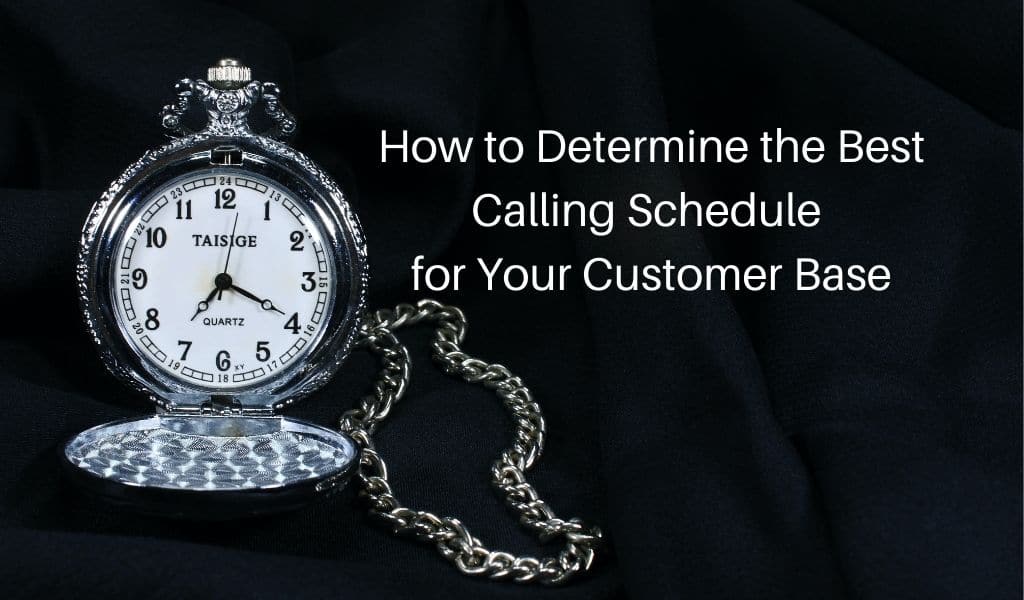Make more connections and close more deals by sticking to a calling schedule that works for both you and your customers.
One of the hardest parts about being a telemarketer is that there’s no way to know whether or not you’re interrupting someone. For obvious reasons, you want to catch people at the best possible time. How can you do that? Plan out a calling schedule designed to minimize potential interruptions so you can have your customers’ full attention.
How are you supposed to know when that is? The truth is, there is some guesswork involved, but you can take the available information and, based on that, determine a calling schedule that makes sense for everyone.
Fortunately, there’s data available to help you with this task. Understanding the best times to call people and the logic behind those times is the first step towards creating successful calling schedules.
Make life simpler with the best auto-dialer on the market. Sign up for a free demo of Call Logic today to find out more!
6 Factors you need to know about to craft a calling schedule that works
1. TCPA Guidelines
To start with, there are certain times of day that you cannot make a sales call. According to TCPA guidelines, you may only call people between 8 am and 9 pm. Calling outside of those hours is not only going to be a bad time to call, but it’s also illegal and can cost you a lot of money in fines and lost business.
2. The best days to call
Believe it or not, there are better days to call people than others. According to the Lead Response Management Study, Wednesdays and Thursdays are the best days to contact leads, and Thursdays are the best day to qualify them if you haven’t already. This is important information to know if you’ve been making calls on Mondays, Tuesdays, or Fridays.
The rationale behind this calling schedule is that people tend to object less to being contacted on Wednesdays and Thursdays. Mondays and Tuesdays are often busy with catching up on business that may have happened over the weekend, and Fridays, many people are focused on finishing what they need to and getting out the door for the weekend.
3. The best times to call
The same study found that the best time to call someone is between 4 pm and 6 pm, and the best time to qualify someone is between 8 am and 9 am or between 4 pm and 5 pm. The rationale for the evening hours is that most people are winding down their days and are more open to interruptions, especially if it helps them avoid starting another task. And the hour between 8 am and 9 am is one where most people have barely started their days, if at all. If you can get to someone before they get going, you might have their ear long enough to make an impact. (On the flip side, people may be in a rush at this hour and less open to calls, so sticking to the 4 pm-6 pm window is probably best if you have to choose one.)
4. The worst times to call
There are also specific calling schedules that are probably not going to bring you a lot of success. The hour from 1 pm to 2 pm, for example, is the worst time to call people, probably because most of them are on lunch breaks and don’t wish to be disturbed. The hour between 11 am and 12 pm also isn’t ideal, presumably because people are either still engaged in their morning work or they’ve headed off to an early lunch. Steer clear of these hours for a better calling schedule that works for your customers.
5. Planning your schedule
Now that you know some of the best and worst times to call, you can look at your schedule and determine what will be best for both you and your customers. Scratch out anything prior to 8 am or after 9 pm entirely, but maybe you want to start your Wednesdays by making calls in the morning. (The hour between 9 am and 10 am is also a reasonably successful time to contact and qualify people.) Or maybe you prefer the evening hours, so you make calls from 4 pm to 6 pm. Setting these as regular call times can help you form a routine that’s effective and sustainable.
Block out Mondays and Tuesdays for busy work or things you can do that don’t involve making calls. Perhaps you want to catch up on emails or look for other prospects during these days. That’s not to say you can’t make any calls, but it’s probably best not to rely on these days to be your big winners.
6. Use what you know about your customers
In addition to the data provided here, it’s also crucial that you use what you already know about your customer base to determine the best calling schedule. You won’t be able to do this for cold calls, obviously, but for warm calls, you will hopefully know your customers well enough to figure out the times that they’re most likely to take your call. For example, maybe one of your customers keeps different hours than the standard 9 am to 5 pm, so you’ll want to adjust your best times to call them to reflect their working hours. Or maybe you have customers in other time zones, in which case you’ll also want to make your calls relevant to their local times.
You may also have customers you know prefer not to be contacted at certain times. This information trumps any data you might find on the subject because it’s specific to the customer and their preferred calling schedule. All the more reason to get to know your customer base well if you don’t already.
Maintain customer profiles, automate processes, and reach more customers with Call Logic’s call management software. Check out a free demo to see what we’re all about!

